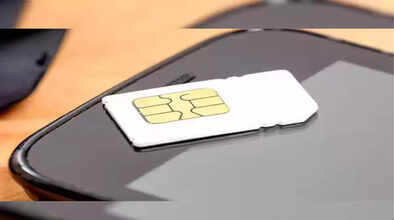Mobile SIM: Why are mobile SIMs cut at the corners? Is it just design or is there a solid reason behind it?

Most of the things we use every day have a specific design reason, whether it's a USB port, a hole in a pen cap, or a mobile SIM card. You may have noticed that every SIM card has a cut corner. But is this just a design element, or is there a solid reason behind it? Most people may not know this.
This is the secret behind the cut corner of the SIM card.
In fact, this small cut is a combination of convenience, security, and technology. The main reason behind the cut corners of the SIM card is the "Poka-Yoke" design principle. This is a Japanese term that means "mistake-proofing." The purpose of this design is to prevent users from inserting the SIM into the phone incorrectly.
A similar cut is made in the phone's SIM tray so that the SIM fits in only one direction. This design ensures that the golden chip portion of the SIM card does not get placed in the wrong position.
SIM card design wasn't like this in the beginning.
When mobile phones were first introduced, the initial SIM cards were perfectly square. It was difficult for users to understand which direction to insert the SIM. Sometimes, people would damage the SIM or the phone slot while trying to insert the SIM upside down.
Then, it was realized that a change in design was needed. Telecom companies and mobile phone manufacturers jointly decided to give the SIM card a shape that was user-friendly and left no room for error.
Convenience isn't just a factor; security is also a factor.
The gold chip embedded in the SIM card is extremely delicate. If the SIM is inserted incorrectly, the phone's pins and SIM contacts can rub against each other. This can not only damage the SIM but also damage your phone's SIM slot. The beveled corner prevents this error and helps ensure the SIM is inserted in the correct direction.
The size changed over time, but the design didn't.
While technology has certainly reduced the size of SIM cards, this cut-off has remained.
Mini SIM: The standard-size SIM card that was used for a long time.
Micro SIM: This size became popular after the advent of smartphones.
Nano SIM: This is the SIM card used in most phones today—much smaller, but with the same cut-off.
This cut-off has maintained a consistent identity across all SIM sizes.
Now the Era of eSIM
Today, technology has advanced so much that the era of eSIM (Embedded SIM) has arrived. This SIM card is not in the form of a card, but is built into the phone's motherboard. Its advantage is that it eliminates the need for a physical SIM slot. But this also means that the small "cut-off corner," which has been the hallmark of SIM cards for years, may also become history in the future.
Disclaimer: This content has been sourced and edited from Zee Business. While we have made modifications for clarity and presentation, the original content belongs to its respective authors and website. We do not claim ownership of the content.

